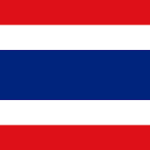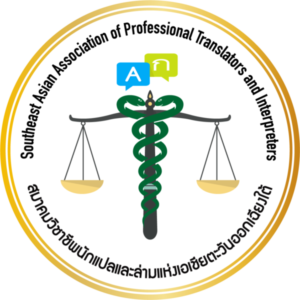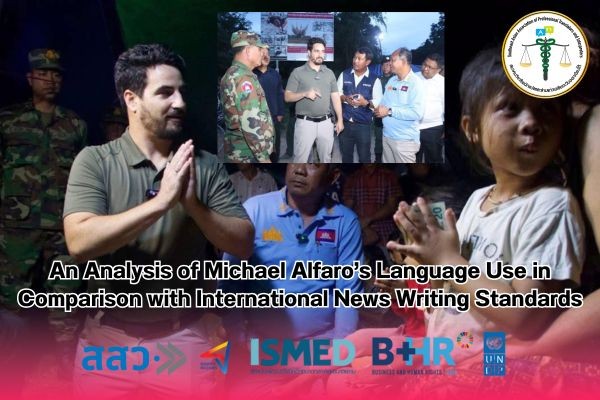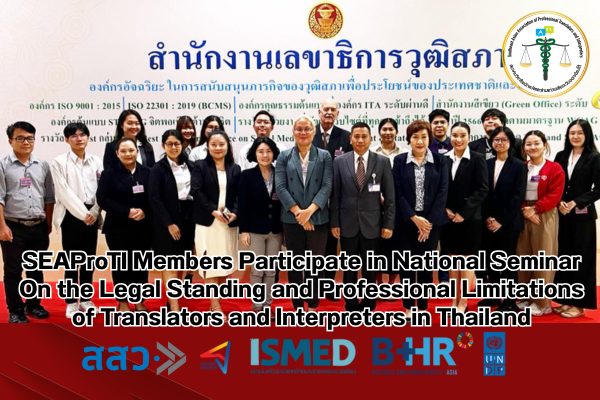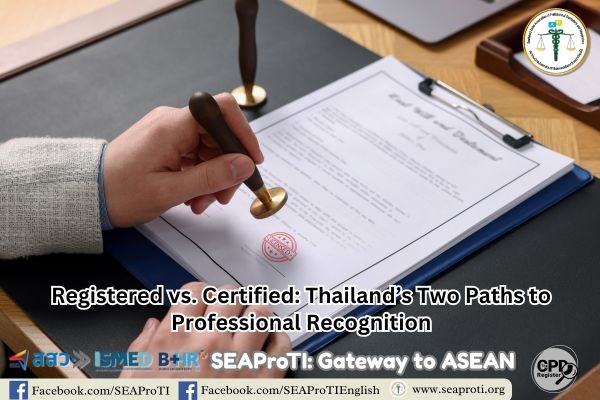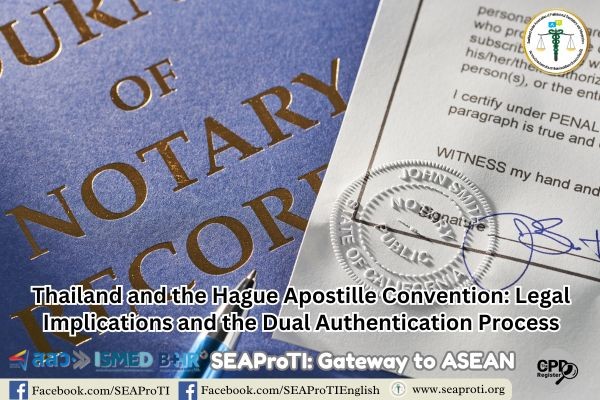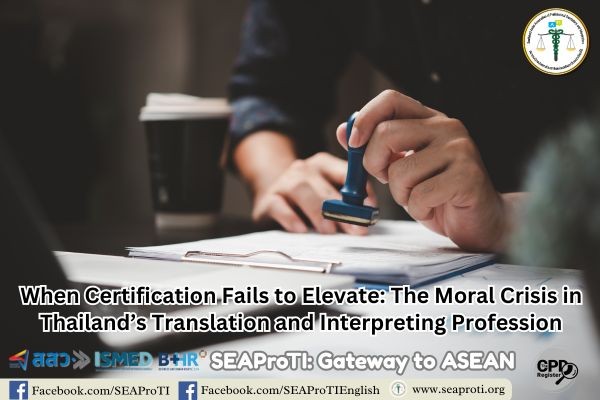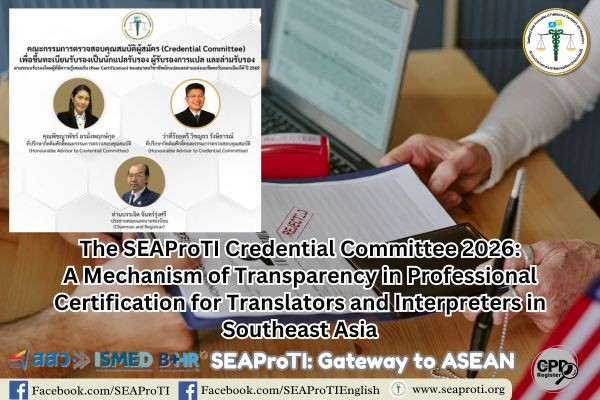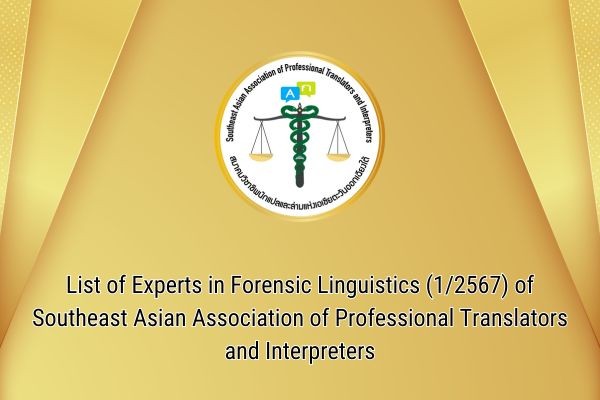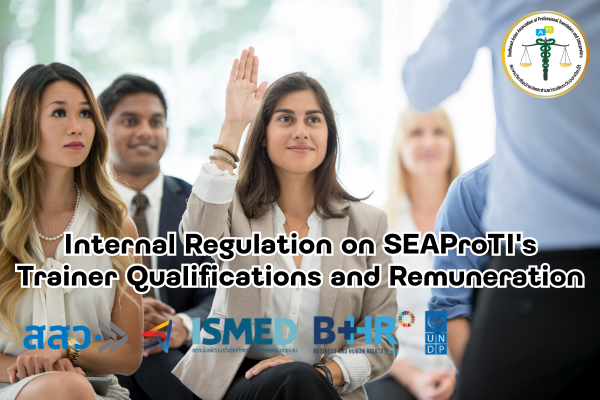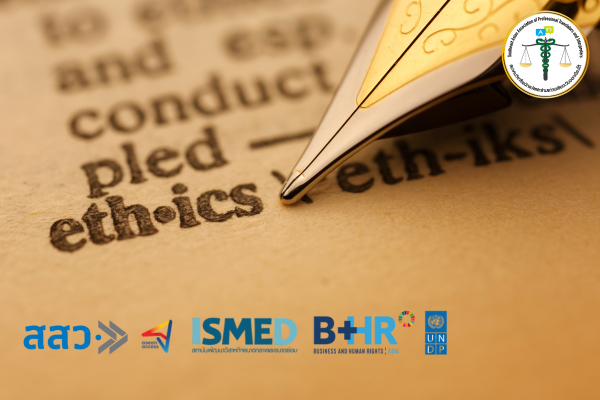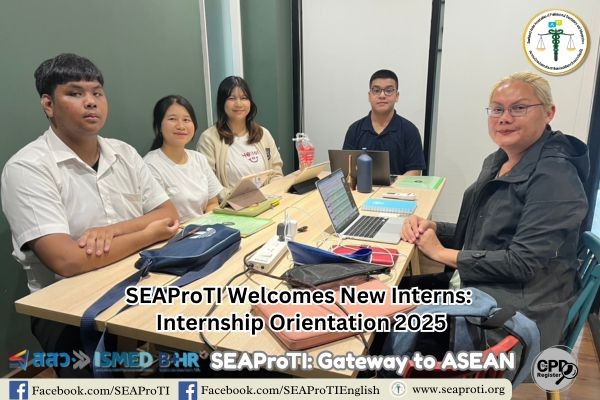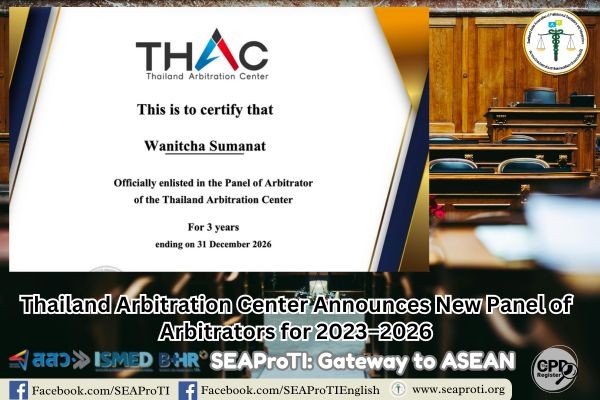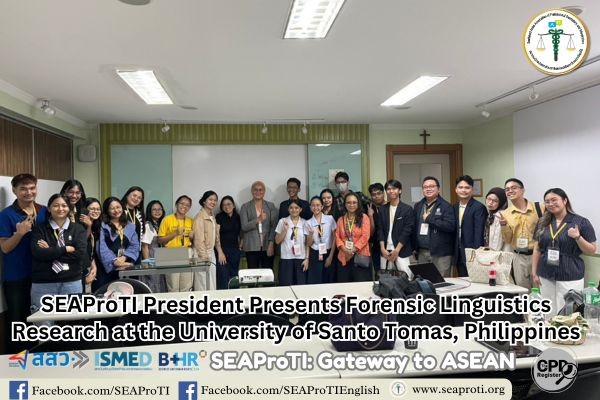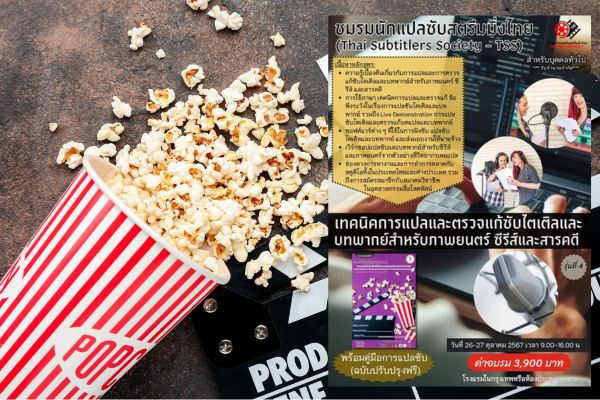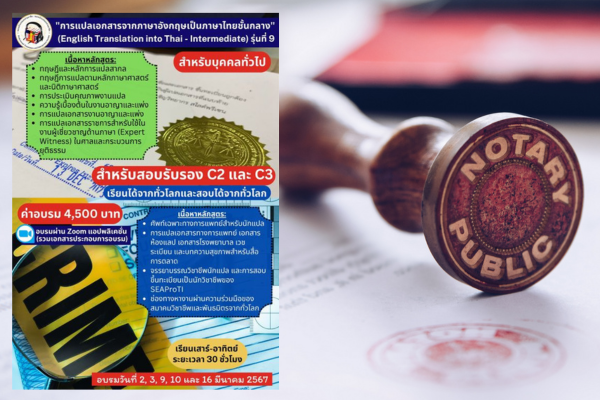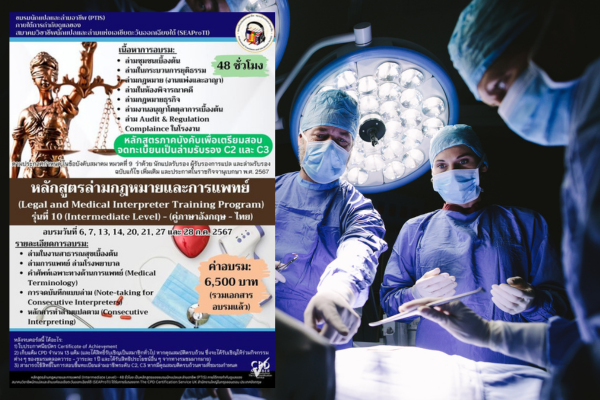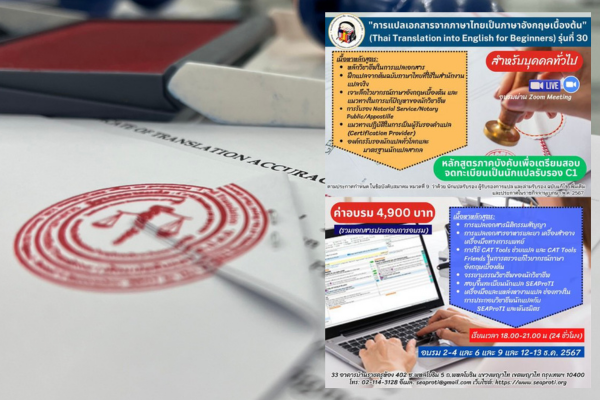An Analysis of Michael Alfaro’s Language Use in Comparison with International News Writing Standards
Author: Wanitcha Sumanat, President, Southeast Asian Association of Professional Translators and Interpreters (SEAProTI)
August 17, 2025, Bangkok — Communication during border conflicts plays a crucial role in shaping public perception. The statements made by Michael Alfaro in describing the Thailand–Cambodia border conflict in August 2025 were expressed in highly emotional and evaluative language. This stands in contrast with the international standards of news reporting, such as those used by Associated Press (AP) and Reuters, which emphasize neutrality and verifiability. This article aims to compare Alfaro’s rhetorical style with international news-writing conventions in order to highlight the distinction between “emotional discourse” and “factual journalism.”
Characteristics of Michael Alfaro’s Speech
Alfaro’s remarks display four key characteristics:
- Emotionally charged language — e.g., “guns facing down range at these young, poor people” and “you see love, you see compassion,” which evoke imagery and empathy.
- Value judgments — e.g., labeling Thailand’s actions as a “violation of the Paris Peace Accords” and “the media has been very unfair,” reflecting explicit evaluative stances.
- First-person testimony — e.g., “I was there when the botched withdrawal of Afghanistan,” emphasizing personal experience over external verification.
- Lack of verifiable attribution — no statistics, documents, or corroboration from multiple sources, as typically required in professional journalism.
Thus, Alfaro’s language aligns with advocacy discourse or political rhetoric rather than factual news reporting (Hallin, 1986; Waisbord, 2013).
International News-Writing Principles
In contrast, international news agencies such as AP and Reuters follow established standards:
- Objectivity/Neutrality: Avoiding emotive language except in direct quotations (Schudson, 2001).
- Inverted Pyramid Structure: Presenting the most essential facts first—who, what, where, when, why, how (Harcup & O’Neill, 2017).
- Attribution: All claims must be attributed, e.g., “according to Cambodian authorities” or “the Thai Ministry of Defense said.”
- Conciseness: Employing clear, straightforward, and non-repetitive language.
Academic Comparison
Academically, Alfaro’s style represents a narrative + advocacy frame that aims to steer public emotion, while international news style reflects an informative + balanced approach, reporting multiple perspectives to allow readers to draw their own conclusions (Mindich, 1998). This contrast highlights differing modes of discourse: Alfaro situates events within a political frame, whereas global news agencies adopt an informational frame.
Example Comparison
- Alfaro: “What you see here in Cambodia is not a threat. You see love, you see compassion…”
- International News Style: “According to Cambodian authorities, thousands of people have been displaced along the border. The Thai military has denied allegations of violating the ceasefire.”
This comparison illustrates that Alfaro seeks to build emotional resonance and guide interpretation, whereas international news agencies report verifiable facts while presenting perspectives from both sides.
Conclusion
Michael Alfaro’s speech represents rhetorical discourse that emphasizes emotional appeal and advocacy, diverging from international journalistic principles emphasizing neutrality, verifiability, and multi-sourced attribution. Understanding this difference is vital for enhancing media literacy, particularly in contexts of international conflict where discourse significantly influences public perception. Upon verification, it has been found that Mr. Michael Alfaro does not possess knowledge or expertise in international language and communication. Moreover, there is no evidence indicating that he has been accredited by any recognized news agency or professional media association, either domestically or internationally. This raises serious doubts regarding his status and credibility as an international journalist.
References
- Hallin, D. C. (1986). The “uncensored war”: The media and Vietnam. New York: Oxford University Press.
- Harcup, T., & O’Neill, D. (2017). What is news? News values revisited (again). Journalism Studies, 18(12), 1470–1488. https://doi.org/10.1080/1461670X.2016.1150193
- Mindich, D. T. Z. (1998). Just the facts: How “objectivity” came to define American journalism. New York: NYU Press.
- Schudson, M. (2001). The objectivity norm in American journalism. Journalism, 2(2), 149–170. https://doi.org/10.1177/146488490100200201
- Waisbord, S. (2013). Reinventing professionalism: Journalism and news in global perspective. Polity Press.
About Certified Translators, Translation Certification Providers, and Certified Interpreters of SEAProTI
The Southeast Asian Association of Professional Translators and Interpreters (SEAProTI) has announced the qualifications and requirements for individuals registered as Certified Translators, Translation Certification Providers, and Certified Interpreters of the Association, as stated in Chapter 9 and Chapter 10 of the Royal Gazette of the Secretariat of the Cabinet, Office of the Prime Minister of the Kingdom of Thailand, dated July 25, 2024, Volume 141, Part 66 Ngor, p. 100. Full details can be accessed at: The Royal Thai Government Gazette
SEAProTI is the first professional association in Thailand and Southeast Asia to establish a certification system for Certified Translators, Translation Certification Providers, and Certified Interpreters.
Head Office: Baan Ratchakru Building, Room 402, No. 33, Soi Phahonyothin 5, Phahonyothin Road, Phayathai District, Bangkok 10400
Email: hello@seaproti.com Telephone: (+66) 2-114-3128 (Business hours: Monday–Friday, 9:00 a.m.–5:00 p.m.)
การวิเคราะห์การใช้ภาษาของ Michael Alfaro เปรียบเทียบกับหลักการเขียนข่าวสากล
ผู้แต่ง วณิชชา สุมานัส นายกสมาคมวิชาชีพนักแปลและล่ามแห่งเอเชียตะวันออกเฉียงใต้ (SEAProTI)
17 สิงหาคม 2568, กรุงเทพมหานคร – การสื่อสารในสถานการณ์ความขัดแย้งชายแดนมีบทบาทสำคัญต่อการรับรู้ของสาธารณชน คำพูดของ Michael Alfaro ที่อธิบายเหตุการณ์ชายแดนไทย–กัมพูชาในเดือนสิงหาคม 2025 นำเสนอผ่านภาษาที่เต็มไปด้วยอารมณ์และการประเมินค่า ซึ่งแตกต่างจากมาตรฐานการรายงานข่าวสากลที่เน้นความเป็นกลางและการตรวจสอบได้ บทความนี้จึงมุ่งเปรียบเทียบลักษณะการใช้ภาษาของ Alfaro กับแนวทางการเขียนข่าวสากล เช่น Associated Press (AP) และ Reuters เพื่อสะท้อนให้เห็นถึงความแตกต่างระหว่าง “วาทกรรมเชิงอารมณ์” และ “วารสารศาสตร์ข้อเท็จจริง”
ลักษณะของคำพูด Michael Alfaro
คำพูดของ Alfaro มีคุณลักษณะสำคัญ 4 ประการ ได้แก่
- ภาษามีอารมณ์ร่วมสูง เช่น “guns facing down range at these young, poor people” และ “you see love, you see compassion” ซึ่งเป็นถ้อยคำที่สร้างภาพทางอารมณ์แก่ผู้ฟัง
- การตัดสินเชิงคุณค่า เช่น การระบุว่าการกระทำของไทยเป็น “violation of the Paris Peace Accords” และ “the media has been very unfair” ซึ่งแสดงท่าทีชัดเจนต่อเหตุการณ์
- การเล่าเรื่องแบบพยานตนเอง เช่น “I was there when the botched withdrawal of Afghanistan” ที่สะท้อนการยืนยันผ่านประสบการณ์ส่วนตัวมากกว่าการอ้างหลักฐาน
- ขาดการอ้างอิงตรวจสอบได้ ไม่มีการยกสถิติ เอกสาร หรือการยืนยันจากหลายแหล่งตามหลักสากลของสื่อ
กล่าวได้ว่าภาษาที่ Alfaro ใช้มีลักษณะเป็น advocacy discourse หรือวาทกรรมเพื่อการเคลื่อนไหว มากกว่าจะเป็นการรายงานข่าว (Hallin, 1986; Waisbord, 2013)
หลักการเขียนข่าวสากล
ตรงกันข้าม สำนักข่าวสากล เช่น AP และ Reuters ยึดหลักการดังต่อไปนี้
- ความเป็นกลาง (Objectivity/Neutrality): หลีกเลี่ยงคำเชิงอารมณ์ เว้นแต่เป็นคำพูดตรงจากแหล่งข่าว (Schudson, 2001)
- โครงสร้างพีระมิดกลับ (Inverted Pyramid): นำเสนอข้อมูลสำคัญที่สุดก่อน เช่น ใคร–ทำอะไร–ที่ไหน–เมื่อไหร่–ทำไม–อย่างไร (Harcup & O’Neill, 2017)
- การอ้างแหล่งที่มา (Attribution): ทุกข้อกล่าวหาต้องตามด้วยการระบุแหล่ง เช่น “according to Cambodian authorities” หรือ “the Thai Ministry of Defense said”
- ความกะทัดรัดและตรงไปตรงมา (Conciseness): ใช้ภาษาสั้น กระชับ และหลีกเลี่ยงคำซ้ำซ้อน
ความต่างเชิงวิชาการ
- Alfaro = Narrative + Advocacy → ภาษามีลักษณะ propaganda / opinionated speech เน้นชี้นำอารมณ์ผู้ฟัง
- ข่าวสากล = Informative + Balanced → มุ่งเสนอข้อเท็จจริงหลายด้านให้ผู้อ่านตัดสินเอง
หากเปรียบเทียบในเชิงวิชาการ ภาษาของ Alfaro จัดอยู่ในกรอบ narrative + advocacy ซึ่งเน้นการชี้นำและการสร้างภาพเชิงอารมณ์ ขณะที่ภาษาของสำนักข่าวสากลเป็น informative + balanced มุ่งรายงานข้อเท็จจริงจากหลายมุมมองเพื่อให้ผู้อ่านตัดสินเอง (Mindich, 1998) ความแตกต่างนี้แสดงให้เห็นถึงการจัดวางเหตุการณ์ผ่านกรอบวาทกรรมที่ต่างกัน กล่าวคือ Alfaro ใช้กรอบทางการเมือง (political framing) ส่วนสำนักข่าวสากลใช้กรอบข้อมูลข่าวสาร (informational framing)
ตัวอย่างเปรียบเทียบ
- Alfaro: “What you see here in Cambodia is not a threat. You see love, you see compassion…”
- หากปรับข้อมูลของ Alfaro เป็นภาษาข่าวสากล: “According to Cambodian authorities, thousands of people have been displaced along the border. The Thai military has denied allegations of violating the ceasefire.”
ตัวอย่างนี้สะท้อนให้เห็นว่า ขณะที่ Alfaro มุ่งสร้างอารมณ์ร่วมและชี้นำการตีความ สำนักข่าวสากลจะนำเสนอเพียงข้อเท็จจริงที่ตรวจสอบได้ โดยให้พื้นที่กับทั้งสองฝ่าย
บทสรุป
ถ้อยคำของ Michael Alfaro ในการนำเสนอข่าวเหตุปะทะชายแดนไทย-กัมพูชา เป็นการใช้ “ภาษาวาทกรรม” ที่มุ่งโน้มน้าวอารมณ์และความรู้สึกของผู้ฟัง ซึ่งแตกต่างจากหลักการใช้ภาษาข่าวสากลที่เน้นความเป็นกลาง การตรวจสอบได้ และการอ้างอิงหลายแหล่ง ความเข้าใจในความแตกต่างนี้มีความสำคัญต่อการพัฒนาทักษะการรู้เท่าทันสื่อ (media literacy) โดยเฉพาะในสถานการณ์ความขัดแย้งระหว่างประเทศที่ข้อมูลและวาทกรรมมีอิทธิพลต่อการรับรู้ของสาธารณชน จากการตรวจสอบพบว่า นาย Michael Alfaro มิได้มีความรู้ความเข้าใจด้านภาษาและการสื่อสารเชิงสากล อีกทั้งไม่ปรากฏหลักฐานว่าได้รับการรับรองจากสำนักข่าวที่มีมาตรฐานใด ๆ หรือจากสมาคมวิชาชีพด้านสื่อใด ๆ ทั้งในและต่างประเทศ จึงทำให้สถานะและความน่าเชื่อถือในฐานะนักข่าวสากลของบุคคลดังกล่าวเป็นที่ตั้งข้อสงสัยอย่างยิ่ง
บรรณานุกรม
- Hallin, D. C. (1986). The “uncensored war”: The media and Vietnam. New York: Oxford University Press.
- Harcup, T., & O’Neill, D. (2017). What is news? News values revisited (again). Journalism Studies, 18(12), 1470–1488. https://doi.org/10.1080/1461670X.2016.1150193
- Mindich, D. T. Z. (1998). Just the facts: How “objectivity” came to define American journalism. New York: NYU Press.
- Schudson, M. (2001). The objectivity norm in American journalism. Journalism, 2(2), 149–170. https://doi.org/10.1177/146488490100200201
- Waisbord, S. (2013). Reinventing professionalism: Journalism and news in global perspective. Polity Press.
เกี่ยวกับนักแปลรับรอง ผู้รับรองการแปล และล่ามรับรองของสมาคมวิชาชีพนักแปลและล่ามแห่งเอเชียตะวันออกเฉียงใต้
สมาคมวิชาชีพนักแปลและล่ามแห่งเอเชียตะวันออกเฉียงใต้ (SEAProTI) ได้ประกาศหลักเกณฑ์และคุณสมบัติผู้ที่ขึ้นทะเบียนเป็น “นักแปลรับรอง (Certified Translators) และผู้รับรองการแปล (Translation Certification Providers) และล่ามรับรอง (Certified Interpreters)” ของสมาคม หมวดที่ 9 และหมวดที่ 10 ในราชกิจจานุเบกษา ของสำนักเลขาธิการคณะรัฐมนตรี ในสำนักนายกรัฐมนตรี แห่งราชอาณาจักรไทย ลงวันที่ 25 ก.ค. 2567 เล่มที่ 141 ตอนที่ 66 ง หน้า 100 อ่านฉบับเต็มได้ที่: นักแปลรับรอง ผู้รับรองการแปล และล่ามรับรอง
*สมาคมวิชาชีพนักแปลและล่ามแห่งเอเชียตะวันออกเฉียงใต้ เป็นสมาคมวิชาชีพแห่งแรกในประเทศไทยและภูมิภาคเอเชียตะวันออกเฉียงใต้ที่มีระบบรับรองนักแปลรับรอง ผู้รับรองการแปล และล่ามรับรอง
สำนักงานใหญ่: อาคารบ้านราชครู เลขที่ 33 ห้อง 402 ซอยพหลโยธิน 5 ถนนพหลโยธิน แขวงพญาไท เขตพญาไท กรุงเทพมหานคร 10400 อีเมล: hello@seaproti.com โทรศัพท์: (+66) 2-114-3128 (เวลาทำการ: วันจันทร์–วันศุกร์ เวลา 9.00–17.00 น.)
